You’ve booked expert panelists, secured beloved local vendors, and hired the best-in-class production support to create an innovative virtual option.
Now that you’ve figured out what your event will be, it can be tempting to think that the prep work is over. But whether you’re planning a release of a new product, an annual industry-wide conference, or a social meeting, you still need to figure out who you think will want to attend—your target audience, that is—so that you can optimize your marketing to grow registrations and engagement.
Curious about how to find target audiences for your event? Let’s break down some tips on how to hone in on a precise—and profitable—audience.
What is a Target Audience?
Sometimes casting the widest net yields smaller returns than dangling your lure in well-researched waters when it comes to marketing.
Because not every brand, product, or event will speak to the interests of every person—and because marketing campaigns can carry steep costs in both time and money—savvy companies craft their messaging to connect with a target audience.
That $45 bottle of single-origin, extra-virgin olive oil?
It might be an unnecessary indulgence for most of the market. But its muted label, rendered in understated earth tones, has been designed to pique the interest of discerning, eco-conscious 40-something foodies with income to spare and wanderlust in their hearts.
In other words, its target audience.
Defined as a group of people that have been identified as likely consumers for a product, service, or event, a target audience might be linked by a host of shared demographics like:
- Age range
- Occupation
- Lifestyle
A clear understanding of a target audience can impact nearly every aspect of branding and production—informing the ideation and creation of wares and events at all stages, including:
- Design
- Messaging
- Distribution
In essence, a target audience dictates marketing—whether it’s for a tube of lip balm or a YouTube creator conference.
Why Is it Important to Identify Your Target Audience?
So why is it crucial to identify a target audience when it comes to events? Narrowing your scope can pay dividends. If you learn as much as you can about who might be interested in attending your event, you can:
- Find relevant leads (i.e., dog rescues in Denver)
- Cater your messaging (i.e., targeted posts on pet rescue boards)
Your target audience may shift based on the goals of your event.
Determining a clear picture of who would want to attend your event at hand allows you to focus your marketing on raising registrations, boost attendance and add-ons, and maximizing your ROI.
This impacts the success of your event on the day of and the success of your company in the days, weeks, and months that follow.
Identifying your target audience correctly can result in:
- A full house – High attendance means a return on your investment for space rentals, vendors, and speaker costs. It also means wide exposure to your brand, values, products, and vision.
- Word of mouth – If you consider your target audience at all stages of event planning, you can tailor your production so that it delights attendees, resulting in positive engagement on social media, an expanding audience, and repeat attendance the following year.
Knowing your target audience also makes it easier to figure out how to promote an event with the ultimate goal of high turnout.
How to Determine Target Audience
Now that you’ve considered the importance of identifying your potential crowd lets zoom in on your target audience.
Look at Your Current Customer Base
The first step? Holding your magnifying glass to what’s right in front of you.
To understand what motivates your current customers to attend your events, look closely at the interests, lifestyle needs, and values that drive them.
Consider current consumers and those who have attended your past events and perform a demographic analysis—a deep look at the general characteristics like age, race, and gender, in addition to other factors such as:
- Education level
- Career
- Household income
- Political affiliation
- Place of residence
- Religious identity
- Number of children
- Homeownership status
Taking care to locate common demographics—as well as interests and industry ties—can help you formulate a detailed sketch of your customer persona.
Create a Customer Persona
Crafting a comprehensive customer persona, also known as a buyer persona, is the key to understanding your target audience and can be your secret weapon when it comes to pulling off a successful event.
Based on data and market research, customer personas are just semi-fictional renderings of ideal customers that act as representatives for your target audience. Brands use these personas to guide product development and enable organizational alignment—but they’re also integral to the success of events.
To put it simply, your customer personas represent the ideal attendees for your event. Perhaps their interests align with the programming, they live locally (or can patch in remotely), or they’re seeking relevant professional enrichment.
To build strong customer personas that will help you leverage your event promotions and zero in on your target audience, flesh them out with:
- Demographics – With the information you gleaned from your existing audience and past event attendees, construct your customer personas with demographic trends in mind.
Choose specific demographics to target when contemplating the customer personas for your event, including:
-
- Age
- Location
- Gender
- Income level
- Education level
- Marital or family status
- Occupation
- Ethnic background
- In-depth details – Time to show off those creative writing chops. When you’re building your customer persona, include as many details as possible. Get deep with focused, highly specific questions.
- Diversity – Your customer base contains more than just one person. Let your persona-building work reflect that. Creating multiple detailed personas will expand your reach and help you communicate authentically to your entire base.
To help you craft your customer persona, it helps to conduct audience research. Research sheds a better light on your target audience by providing concrete information, from their likes to their spending habits. This strategy can be executed by conducting surveys, checking out a potential customer’s Facebook and Twitter accounts, visiting internet forums, tracking current customers, etc. The information gathered from the research can not only provide a clearer image of the customer persona but even their psychographics.
Consider Psychographics
Your target audience members have complex interests and values that don’t come through in demographic studies. That’s where psychographics—the study of consumers based on their behaviors, beliefs, and driving hopes, ambitions, and fears—comes into the equation. Your customer personas, and the subsequent notion of your target audience, should depend on them.
Psychographics might explain why a potential attendee might be interested in your event by examining pain points and goals.
Are they longing for motivation when it comes to her health and fitness? Are they hoping to grow her personal or professional network after a lonely couple of years?
Engage in psychographics as you build your customer personas by asking questions related to behavior, habit, and preference, such as:
- Are they a night owl or an early riser?
- Do they drive or take the train?
- Podcasts or pop songs?
- Dive bars or nightclubs?
- Sweatsuits or suede pumps?
The Best Strategies for Gathering Information—and Gaining Insight into Your Audience
By now, you’ve given a hefty amount of time and thought to your current customer base and customer personas. Time to send out invites, right?
Before you launch your event promo, make sure to engage in market research by talking to colleagues, observing industry trends, and running focus groups, as well as:
- Looking to past events – Say you organized a similar event last year. According to your overfilled inbox and countless Twitter mentions, your audience connected with the panelists, loved the pace of the programming, and Wow! Those goodie bags, though.
Congratulations are due. And not just because your event was a win, start to fin — but because you have key insight into your target audience, including its demographic make-up and values.
- Sending out surveys – If you have a subscriber base or email list, sending out a pre-event survey will not only help you ascertain what your audience looks like but what they’re looking for. In addition to sourcing info on interests, demographics, and background, ask questions that touch on what they are seeking from an event, like:
-
- What kind of event would you like to attend: virtual, in-person, or hybrid?
- Who would you like to see speak?
- What kind of refreshments or concessions would you be interested in?
- Sizing up the competition – Competition can be daunting, but it can also be motivating and clarifying, especially if you’re new to planning and hosting events. Seek out companies running events that are similar to yours and take stock of their targeting strategies. Ask yourself:
-
- Where are they posting their promos—which websites, social media sites, or newsletters?
- What kind of language, imagery, and design are they using for their promotional materials?
- What level of attendance are they drawing?
After getting to really know your target audience, you can craft your marketing efforts to resonate with them, such as publishing a compelling Facebook or LinkedIn ad, creating a short video to share on your site, and more.
Dig Deep, Fill Seats
You’ve worked diligently to gain crystal-clear insight into your target audience for your event. Now it’s time to convince them to join you for the afternoon, evening, or weekend.
To do so, you’ll want to implement a marketing plan that signals to your customers—presenting your event as the answer to their hopes, ambitions, and needs.
Be thorough. Consider how the target audience benefits from the event and what might motivate them to attend. Then, strive to clearly communicate these outcomes and incentives both in promotional materials and the event itself.
Make It an Event to Remember with Vario
You know your business better than anyone. And with market research, customer personas, demographic and psychographic analysis, you can also know how to determine the target audience for your event and execute your most effective marketing campaign yet.
For everything else? We’re here to help.
With best-in-class, behind-the-scenes event production and management services, we navigate the ever-evolving industry to ensure that your event is dynamic, cutting edge, and aligned with your company’s values.
Always meeting the high standards of your stakeholders and target audience—that’s our promise.
Sources:
Investopedia. Target Market. https://www.investopedia.com/terms/t/target-market.asp
ThoughtCo. What Is Demographics? Definition, Usage, Examples in Advertising. https://www.thoughtco.com/what-are-demographics-and-how-are-they-used-38513
HubSpot. The Definition of a Buyer Persona. https://blog.hubspot.com/marketing/buyer-persona-definition-under-100-sr?_ga=2.212107664.546557761.1630418185-657152695.1630418185
HubSpot. How to Use Psychographics in Your Marketing. https://blog.hubspot.com/insiders/marketing-psychographics
Learn.g2. What Is Audience Research? (+How to Conduct It) https://learn.g2.com/audience-research







